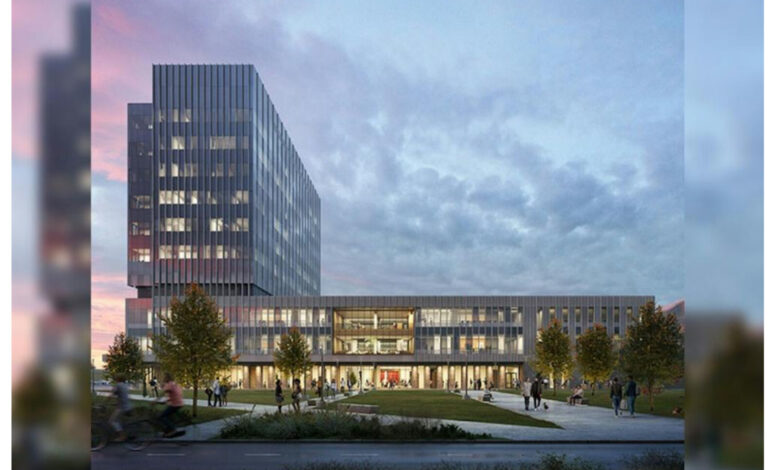NEW CAMPUS FOR IU MED SCHOOL

The Indiana University School of Medicine was founded in 1903, and until 1914 was a 2-year basic science program on the Bloomington, IN campus. In 1914, Robert Long Hospital was opened, and medical education was relocated to Indianapolis. When the Medical College Building (now called Emerson Hall) opened in 1919, the capital city of Indiana became permanent home of Indiana’s lone medical school.
When I started med school in 1965 (see “IUMC in the mid 1960’s”), the Indianapolis campus had been in existence for more than a half century, and as a result, each building was old and had poor lighting, high ceilings, open wards with patients separated only by curtains. They had a dark, depressing, lonely, “what-am-I-doing-here?” atmosphere. Our lectures and lab sessions were in the Med-Science Building (now called VanNuys Hall) which opened in 1959, but it, too, seemed old and depressing.
The Indianapolis campus has evolved a great deal since 1969, the year I graduated. The badly-needed University Hospital was built, all of the existing hospitals underwent renovations and expansions, a University Hotel and Conference Center was built, the massive Indiana University-Purdue University at Indianapolis (IUPUI) campus was developed, and acquisition of Methodist Hospital completed. Plus, expansion into eight regional campuses has given Indiana University a truly statewide medical education presence.
The biggest transition in recent years, though, is now underway. Instead of at 1100 West Michigan St., all basic science courses, gross anatomy, clinical skills and surgical skills will be taught at a brand new Medical Education Center southwest of 16th St. and Senate, south of IU Health Methodist campus and near Goodman Hall and the Neuroscience Research Building. This new building will be 326,000 square feet on 11 floors; the first three expansive floors will be topped by an 8-story tower building. A central atrium leads to a third-floor “Center for Learning” where physical examination will be taught in exam rooms, simulation suites, and virtual reality technology. A mock hospital ward will train students in hospital care.
Lecture halls, large classrooms (8), a gross anatomy lab (35 cadaver stations), and surgical skills lab (robotics, cadaver simulation) occupy the first three floors, while the 8-story tower building houses individual offices and research labs. A huge library is in the new education center, as well. It sounds like an awesome project; something the largest medical school in the United States has needed for many years. The $235 million price tag makes it a quarter of the cost to build Lucas Oil Stadium, but it will be money well-spent when med students pass through it on the way to their degree.
Dr.G’s Opinion: Of course it’s not the facility that educates the med student, but having a bright, modern, and open lab, lecture hall, or classroom provides a much more conducive environment for learning. However, faculty members do educate students so having modern facilities is bound to attract more top notch faculty. That’s a good thing. Medical school is an incredibly memorable experience, and I have hundreds of fond memories of my two basic science years in the Med Science building on West Michigan St. Med students henceforth will have memories generated by their experiences in the new building expected to open in the summer of 2025. Those will be good memories and will be part of the broader knowledge and skill they will gain from learning in a brand new facility. This will definitely be a boost to the reputation and prestige of the medical school. I almost wish (almost) I could be part of the first class to occupy this building. It would be fantastic.




What is your opinion of the Marian University School of Osteopathy? Our granddaughter is going to Marian to study nursing with an interest in medical school.
IU Med School, amazingly, has never placed emphasis on training family physicians. Like most medical schools family medicine is an afterthought. Marian University fills that void. Probably 75% of the family medicine residents at St. Francis are DO grads of Marian. I’m old school and think MD’s are better trained than DO’s, but I’m probably biased. Good luck to your granddaughter. Go for it!
What doubts? The content came directly from an alumni association brochure. If it’s inaccurate, I apologize.
Maybe it should be “New Location for IU Med School campus”